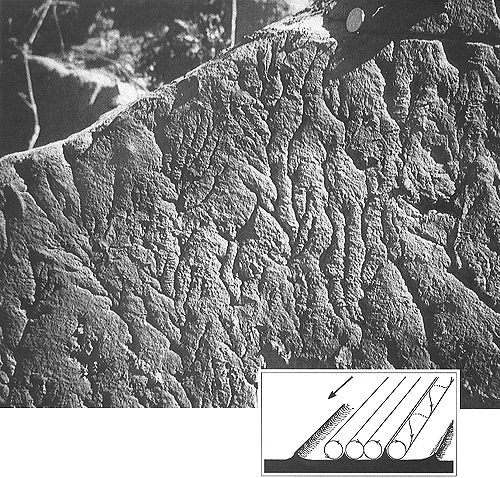
Dendritic ridge casts
Plate 95

Dendritic ridge casts
Plate 95
These markings allow us to recognize the paleocurrent direction, which is the direction of convergence of the dendritic lines. The lines look like fissures but are actually the molds of narrow ridges of mud alternating with wider and flatter furrows. As the inset shows, this minor topography was created by a current flowing on a muddy bottom: at the base of the current, cylindrical vortexes would form, with water particles rotating in them to give a helicoidal flow. The sense of rotation would alternately change in adjacent vortexes (called also spiral tubes ), which are organized in couples as shown by experiments. Each couple pushes the sediment apart where descending flow lines diverge, and suck it up where ascending lines diverge. Furrows and ridges would thus be made at the same time, as parts of a single process that combines erosion with deformation. Were the mechanism purely erosional, the crests would be residual features, i.e., noneroded parts of a more elevated surface.
The structure has been reproduced in flume experiments, verifying that tubular vortexes tend to converge down current, and that where convergence actually occurs, a coupled vortex is lifted and looses contact with the bed.
In section view, mud ridges are pointed and can deviate from the vertical; they virtually cannot be distinguished from flame structures, produced by load deformation and upward squeezing of mud (see plates 123, 124, and color photos 7 and 8).
Macigno Formation, Lower Miocene, northern Apennines.